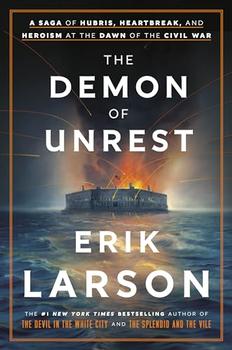Summary | Excerpt | Reviews | Beyond the Book | Readalikes | Genres & Themes | Author Bio
Observations on the History and Habitat of the City's Most Unwanted Inhabitants

Critics' Opinion:
Readers' Opinion:
First Published:
Apr 2004, 256 pages
Paperback:
Apr 2005, 256 pages
 Book Reviewed by:
Book Reviewed by:
BookBrowse Review Team
Buy This Book
Chapter One
WHEN I WROTE the following account of my experiences with rats, I lived in an apartment building on a block filled with other apartment buildings, amidst the approximately eight million people in New York City, and I paid rent to a landlord that I never actually met-though I did meet the superintendent, who was a very nice guy. At this moment, I am living out of the city, away from the masses, in a bucolic little village with about the same number of inhabitants as my former city block. I wouldn't normally delve into my own personal matters, except that when I mention my rat experiences to people, they sometimes think I took extraordinary measures to investigate them, and I didn't. All I did was stand in an alley--a filth-slicked little alley that is about as old as the city and secret the way alleys are secret and yet just a block or two from Wall Street, from Broadway, and from what used to be the World Trade Center. All I did was take a spot next to the trash and wait and watch, rain or no rain, night after night, and always at night, the time when, generally speaking, humans go to sleep and rats come alive.
Why rats? Why rats in an alley? Why anything at all in a place that is, let's face it, so disgusting? One answer is proximity. Rats live in the world precisely where man lives, which is, needless to say, where I live. Rats have conquered every continent that humans have conquered, mostly with the humans' aid, and the not-so-epic-seeming story of rats is close to one version of the epic story of man: when they arrive as immigrants to a newfound land, rats push out the creatures that have preceded them, multiply to such an extent as to stretch resources to the limit, consume their way toward famine--a point at which they decline, until, once again, they are forced to fight, wander, or die. Rats live in man's parallel universe, surviving on the effluvia of human society; they eat our garbage. I think of rats as our mirror species, reversed but similar, thriving or suffering in the very cities where we do the same. If the presence of a grizzly bear is the indicator of the wildness of an area, the range of unsettled habitat, then a rat is an indicator of the presence of man. And yet, despite their situation, rats are ignored or destroyed but rarely studied, disparaged but never described.
I see that I am like one person out alone in the woods when it comes to searching out the sublime as it applies to the rat in the city. Among my guidebooks to nature, there is no mention of the wild rat, and if there is, the humans that write the books call them invaders, despised, abhorred, disgusting-a creature that does not merit its own coffee-table book. Here is the author of a beautiful collection of photographs and prose joyously celebrating the mammals of North America as he writes about rats: "There comes a time when even the most energetic of animal lovers must part ways with the animal kingdom." He goes on: "No matter how much you like animals there is nothing good to say about these creatures ..." It is the very ostracism of the rat, its exclusion from the pantheon of natural wonders, that makes it appealing to me, because it begs the question: who are we to decide what is natural and what is not?
What makes me most interested in rats is what I think of as our common habitat--or the propensity that I share with rats toward areas where no cruise ships go, areas that have been deemed unenjoyable, aesthetically bankrupt, gross or vile. I am speaking of swamps and dumps and dumps that were and still are swamps and dark city basements that are close to the great hidden waters of the earth, waters that often smell or stink. I am speaking, of course, of alleys-or even any place or neighborhood that might have what is commonly referred to as a "rat problem," a problem that often has less to do with the rat and more to do with man. Rats will always be the problem. Rats command a perverse celebrity status-nature's mobsters, flora and fauna's serial killers-because of their situation, because of their species-destroying habits, and because of their disease-carrying ability-especially their ability to carry the plague, which, during the Black Death of the Middle Ages, killed a third of the human population of Europe, something people remember, even though at the time people didn't know that rats had anything to do with all the panic, fear, and death.
>From Rats: Observations on the History and Habitat of the City's Most Unwanted Inhabitants. Chapter 1, pages 1-14. Copyright Robert Sullivan 2004. All rights reserved. No part of this book may be reproduced without written permission from the publisher, Bloomsbury.




Not doing more than the average is what keeps the average down.
Click Here to find out who said this, as well as discovering other famous literary quotes!
Your guide toexceptional books
BookBrowse seeks out and recommends the best in contemporary fiction and nonfiction—books that not only engage and entertain but also deepen our understanding of ourselves and the world around us.